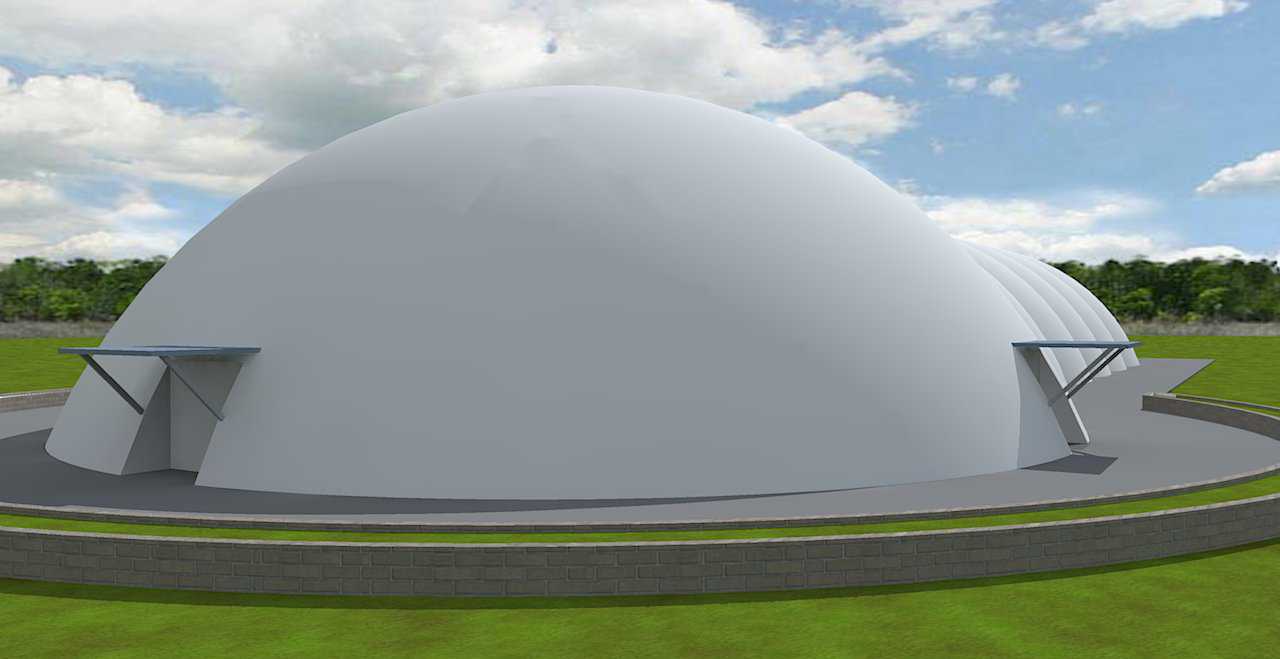Curling is called chess on ice. It’s easy to see why. It requires a unique combination of strategy, teamwork, and skill. People love it. Its popularity has exploded — especially after it became an Olympic sport. With more players than ever, more curling rinks are needed. One person told me there are 35 proposed rinks for the Chicago area alone. We’ve been receiving more calls and decided to look at how a dedicated curling facility would work in the Monolithic Dome.
It’s all about the ice
Why not just use a hockey rink? Well, many places do use them, but it’s not ideal. The ice surface — scraped clean by a Zamboni — doesn’t work for curling stones. The stones need a pebbled surface to glide smoothly to the target.
Remember, curling started in Scotland on frozen lakes back in the 1500s. Lakes are not the smooth-as-glass ice rinks you find in a climate controlled hockey facility. There are little bumps all over the surface — pebbles if you will. Add some blowing snow and other imperfections and the stones glide easily.
When curling moved indoors, they had to recreate those bumps and imperfections. The surface looks more like an orange peel than a sheet of glass.
For hockey rinks they have to carefully build up the curling sheet for the games and then scrape and resurface the rink for ice skating later. It’s not the ideal environment curling enthusiasts crave — not to mention the competition for ice time by hockey players and figure skaters.
Monolithic Dome curling rinks are ideal
Curling sheets are shorter and thinner overall than a hockey rink. If we design a Monolithic Dome using a caterpillar shape, we can fit four curling sheets plus seating for several hundred spectators. We can easily adjust the design to add more storage or spectator space. Obviously we need concessions, too. The whole design is simple and affordable.
Temperature control is everything. A basic metal building means more refrigeration is needed to maintain the ice. In hotter climates, the heat gain during the day could still affect ice quality.
With the Monolithic Dome, controlling the temperature is a given. It’s a FREE benefit when you consider the competitive cost of construction in the first place. Less refrigeration is needed and interior day/night temperature swings are much smaller.
Monolithic Dome energy efficiency means lower equipment costs during construction and much lower long-term operating costs. This savings could mean the difference between a successful facility and one that barely gets by.
We can help
If you are interested in a curling rink, give a call. Let us work with you to get it built. In many cases, we can even help get financing.
Article contributions and editing by Dave South.
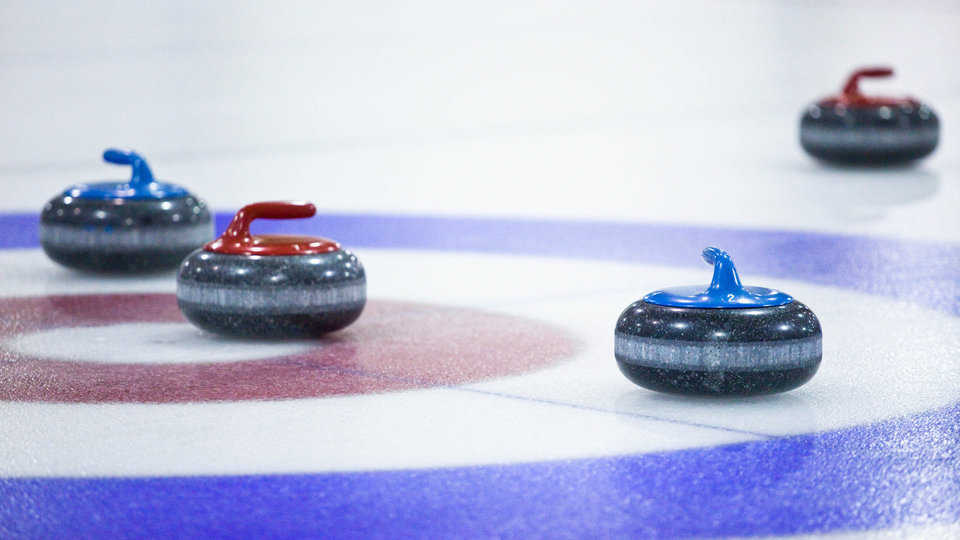
Curling stones on the pebbled ice surface. (flickr/bensonkua)
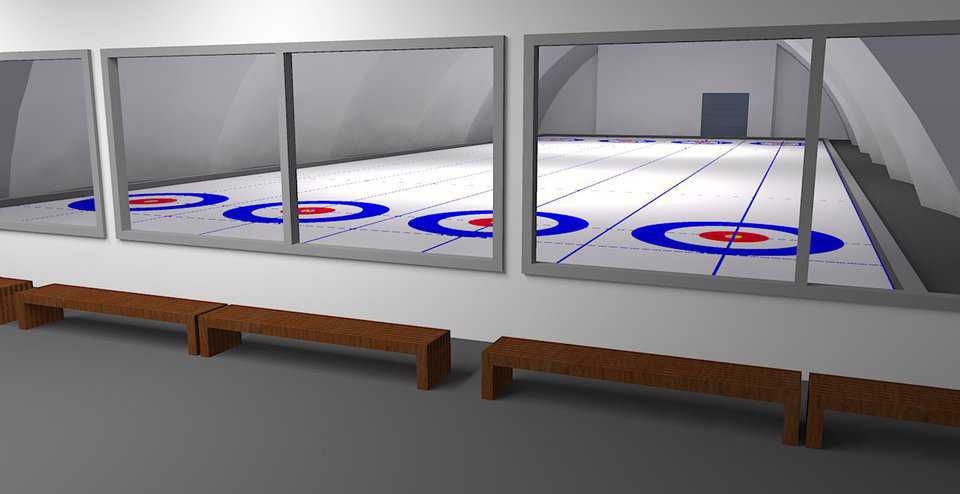
Rendering of the interior viewing area with four curling sheets. (Kaleb Larsen)
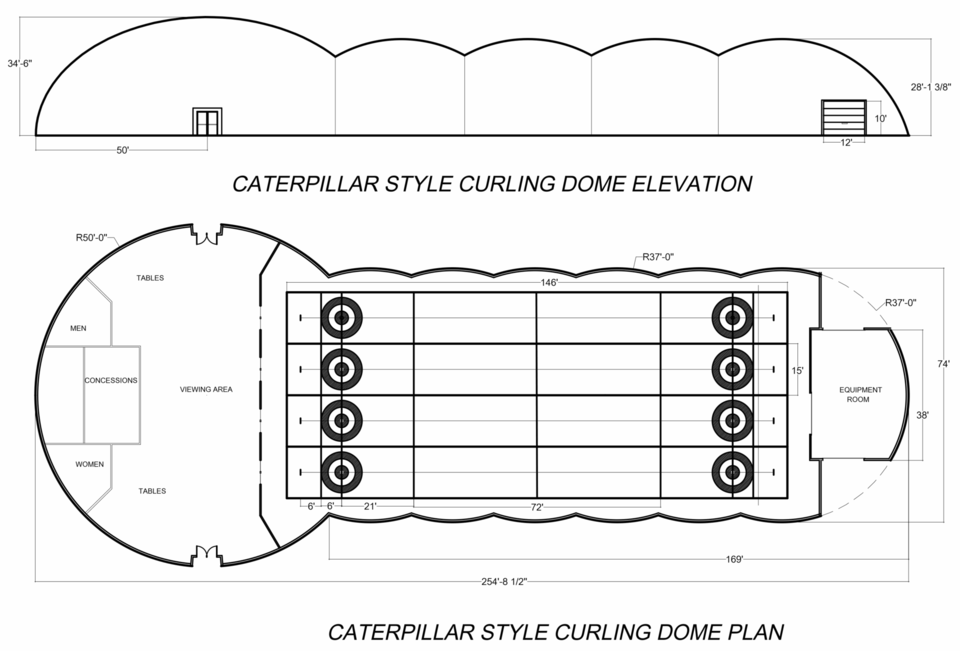
Four sheet curling dome uses long caterpillar for the ice sheets and a larger end dome for the warm areas — includes restrooms, viewing area, concessions. (Larry Byrne)
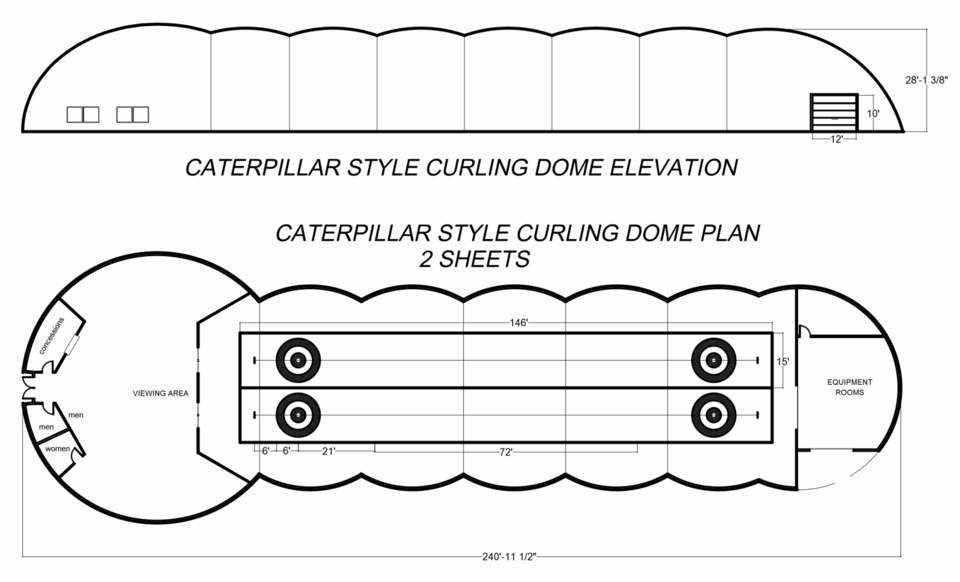
Two sheet curling dome. (Larry Byrne)
